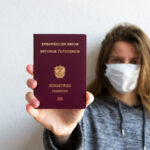When you dream of exploring a foreign land, visiting friends and family abroad, or embarking on a business trip, you may need a vital document known as a visa. But what exactly is a visa, and how does it work? In this comprehensive guide, we’ll delve into the world of visas, exploring their various types, application methods, and the important distinctions between visas, passports, and residence permits.
What Is a Travel Visa?
A visa is a travel document that grants you access to a foreign country for a specified duration. In most cases, you must apply for a visa before traveling, either through an embassy, consulate, or online application. Some countries also offer visas on arrival, permitting entry upon landing. Visas are typically affixed to your passport and specify the length of your stay. Visas serve several essential functions, primarily as a security measure to track incoming individuals and deter illegal immigration. They also help nations screen out potential security risks.
What Does a Travel Visa Look Like?
A travel visa is typically a sticker or stamp attached to your passport, featuring your name, photograph, and the approved length of your stay. In some cases, visas are issued as separate documents, such as electronic visas, which you must print and carry with you.
A Brief History of Travel Visas
The term “visa” has its roots in the Latin phrase “charta visa,” meaning “verified paper” or “paper that must be seen.” Historically, visas were separate documents accompanying passports during international travel. Over time, most visas have transitioned to stamps or stickers affixed to passports. Today, a valid passport issued by your home country is a necessary identification document for international travel. Traveling visas, issued by your destination country, play a crucial role in migration control. Here’s a brief historical overview of travel documents:
- 420 BC: First travel documents were mentioned in the Hebrew Bible when Nehemiah, under Persian King Artaxerxes I’s service, requested passage to Judea.
- 1386-1442: King Henry V is credited with creating the first passport.
- 1643-1715: King Louis XIV of France issued personally signed “passe ports.”
- 1918: Passports became obligatory documents for international travel after World War I.
- 1922-1938: The League of Nations established the Nansen passport to assist refugees.
- 1945: At the end of World War II, stricter border control made both visas and passports mandatory for international travel.
Travel Visa Types by Purpose
Visas come in various types, each tailored to the purpose of your travel. Here are some common visa categories:
- Tourist Visas: Issued for recreational purposes, these short-term visas usually last for three months and do not permit work. You can apply for them multiple times if approved.
- Transit Visas: Allow you to pass through a country while en route to a third destination. They’re issued for varying durations and must be obtained before traveling.
- Medical Visas: For seeking medical treatment abroad, these visas are issued for the treatment and recovery period. Documentation from your doctor is often required.
- Working Holiday Visas: Designed for working while traveling, they are typically valid for one to two years, with age restrictions.
- Student Visas: Issued for educational purposes, their validity corresponds with the duration of your study program.
- Work Visas: Required for employment in a foreign country, usually issued for one to four years.
- Family Reunification Visas: Allow spouses and minor children to join family members working in another country.
- Investment Visas: Granted to those making substantial financial investments, potentially leading to residency.
- Official Visas: For diplomatic representatives working abroad. Examples include diplomatic, service, and courtesy visas.
- Refugee or Asylum Visas: Offered to individuals fleeing persecution based on religious, racial, or political reasons.
- Digital Nomad Visas: For remote workers who can work for companies or individual clients. Requirements vary by country.
- Retirement Visas: Issued to those retiring abroad, with proof of sufficient funds.
- Pilgrimage Visas: Granted for religious journeys in other countries, such as the Hajj visa for Muslims visiting Mecca.
Visa-Free Travel
Not everyone requires a visa to travel abroad. Many countries have visa waiver agreements, allowing citizens of specific nations to enter visa-free for short trips. However, the duration of visa-free stays is limited, varying from a few days to several months. Regardless of your nationality, it’s crucial to check visa requirements before traveling. Remember, when traveling without a visa, you typically cannot engage in employment or provide goods and services.
Ways to Get a Travel Visa
You can obtain a travel visa through various methods, depending on your destination and nationality:
- Visa Application at an Embassy: In most cases, you can apply for a visa at the embassy or consulate of your destination country. The process may involve making an appointment, gathering required documents, paying a processing fee, and sometimes attending a visa interview. Note: Some embassies or consulates may outsource visa submissions to private travel agencies.
- Online Visa Application: Some countries offer electronic visas (e-visas) that you can apply for online. These e-visas are typically printable documents not attached to your passport. The process involves completing an online application form, attaching electronic copies of your documents, and paying a visa fee. For easy visa application process, get in touch with us today!
- Visa on Arrival: Certain countries offer visas on arrival (VOA) at the airport or other entry points. To obtain a VOA, you’ll apply, pay a fee, and wait for a decision before proceeding. It’s essential to note that not all countries offer visas on arrival, and eligibility may be limited to specific nationalities and entry points.
Common Reasons for Travel Visa Denial
Your visa application may be denied for various reasons, including:
- Passport Validity: Many countries require a passport with a validity period of at least three to six months upon entry. However, the start of this period might vary based on your travel destination.
- Passport Blank Pages: Countries typically mandate two to four blank pages in your passport to accommodate visa and entry stamps.
- Vaccination Requirements: Some countries in Africa may require an international vaccination certificate as a visa condition.
- Criminal Record: It’s usually challenging to obtain a visa with a criminal record, though a few countries may grant waivers.
- Travel Ban: Governments can declare individuals as “persona non grata,” preventing their entry.
- Inadequate Health Insurance: Many countries require visitors to have travel health insurance.
Travel Visa Duration and Validity
Travel Visa come in various durations and validities:
- Short-stay Visa: Lasts from a few days to several months, often for tourists, business travelers, or those seeking medical attention.
- Long-stay Visa: Can extend for months or years, often associated with residence permits.
- Single-entry Visa: Allows a one-time entry, after which you cannot return.
- Multiple-entry Visa: Permits multiple entries as long as the visa remains valid.
What Is the Difference Between a Passport and a Travel Visa?
While both are essential travel documents, the main distinction between a passport and a visa lies in their issuance and purpose:
- A passport is issued by your home country and serves as an identification travel document.
- A visa is issued by the country you intend to visit and signifies permission to enter that specific nation.
- Passports typically have a longer validity, around ten years, whereas visas are shorter, usually spanning a few months.
What Is the Difference Between a Travel Visa and a Residence Permit?
Though often used interchangeably, there is a notable difference between visas and residence permits:
- A visa grants permission to enter a foreign country for a specific, usually short, period.
- A residence permit allows you to settle in a foreign country for an extended duration. Sometimes, you may convert a visa into a residence permit upon arrival, while in other cases, you may automatically receive a residence permit alongside a long-stay visa.
Electronic Travel Authorizations
Electronic travel authorizations are entry requirements for travelers who do not need a visa for certain countries. These authorizations are obtainable online for a small fee and offer extended validity. Electronic travel authorizations serve the primary purpose of tracking the movement of travelers, making rejections unlikely, including the following:
- eTA (Canada): Costs CAD 7, approved within minutes, and valid for up to five years for stays of up to six months per trip.
- ETA (Australia): Costs AUD 20, approved within minutes, and issued for one year, allowing multiple visits.
- ESTA (United States): Costs USD 14, approved within minutes, and valid for up to two years, permitting multiple entries with a maximum three-month stay per trip.
- ETIAS (European Union): Mandatory starting from May 2025, it will cost €7, be valid for three years, and allow multiple trips of up to three months during its validity period.
Joint Travel Visa Schemes
Certain regional organizations issue common visas for all their member states. Additionally, holding a valid visa from one country may grant you visa-free access to multiple others. Notable examples include:
- Schengen Visa: Allows entry to any of the 26 European member countries in the Schengen Area.
- Central American Single Visa: Simplifies travel between Guatemala, El Salvador, Honduras, and Nicaragua.
- Gulf Cooperation Council (GCC): Promotes free movement within the Middle Eastern member countries.
- Pacific Alliance: Facilitates visa-free travel among Chile, Colombia, Mexico, and Peru.
- KAZA Univisa: Permits travel between Zambia and Zimbabwe for 30 days.
- CARICOM Visa: Enables visa-free travel among 15 Caribbean countries, also issuing a joint CARICOM passport.
- Economic Community of West African States (ECOWAS): Allows free movement among 15 member states in West Africa.
- Mercosur Agreement: Promotes visa-free travel for citizens of four member states and associate countries.
What Is an Exit Travel Visa?
Exit visas are travel permits granting permission to leave a specific country. While they were once a common practice, many countries have discontinued or significantly reduced the use of exit visas due to human rights concerns. However, some countries still require exit visas for certain nationalities.
Countries that may require exit visas include Belarus, Iraq, Kuwait, Lebanon, North Korea, Oman, Russia, Saudi Arabia, Singapore, China, and the United Arab Emirates. Be sure to check exit visa requirements with the appropriate embassy or consulate before your departure.
Conclusion
Understanding travel visa is important for seamless international travel. Whether you’re planning a holiday, embarking on a work assignment, or reuniting with family abroad, knowing the visa requirements and application procedures is key to a successful and hassle-free journey. Traveling the world is an exciting adventure, and with the right visa in hand, you can explore diverse cultures, breathtaking landscapes, and create lasting memories.





















